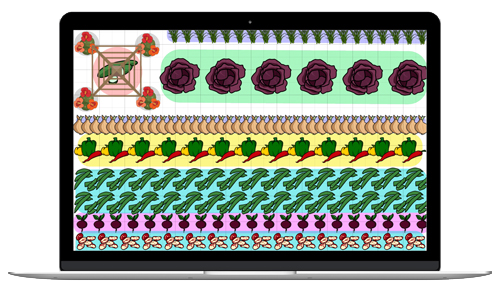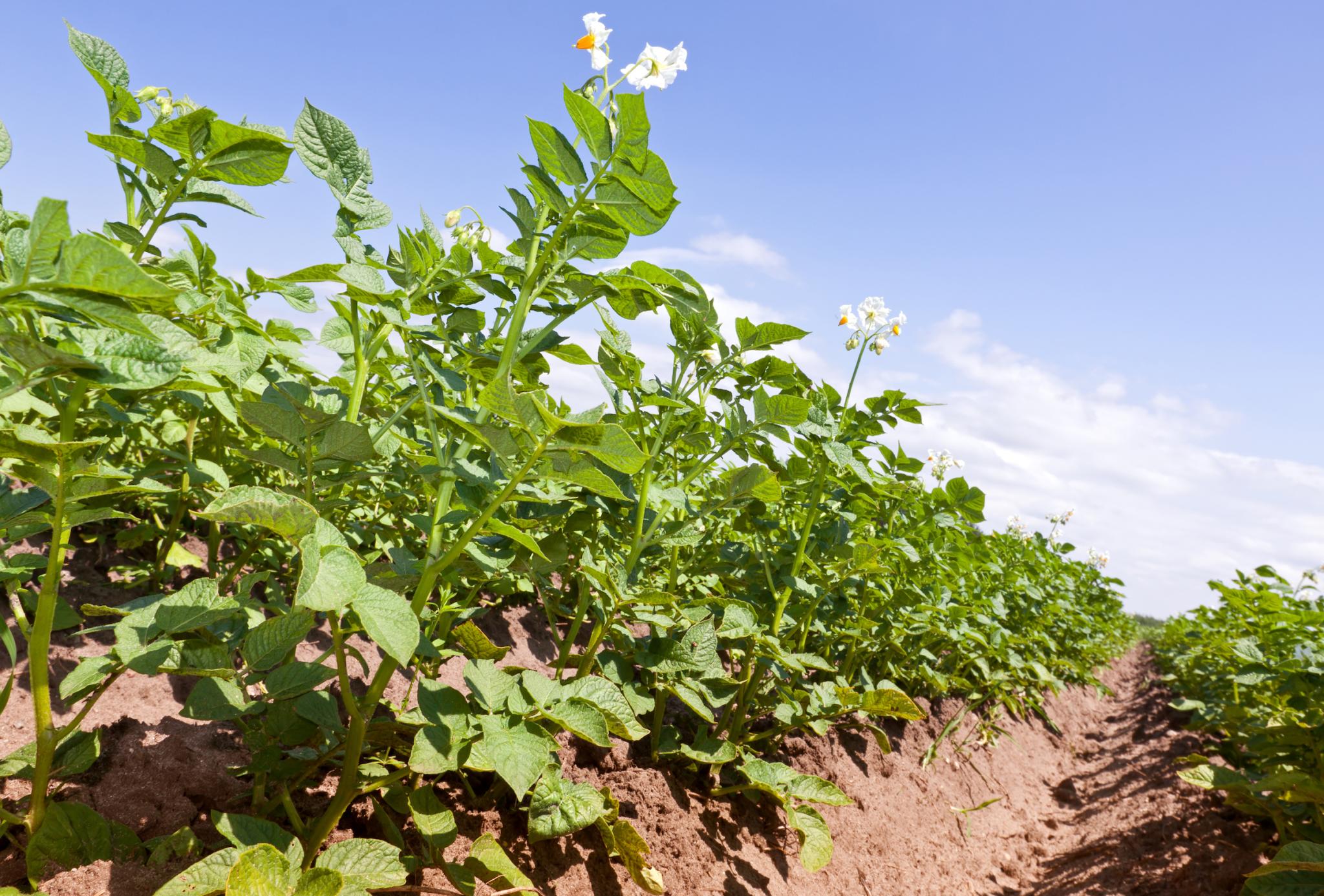
Planting, Growing, Harvesting, and Storing Potato Plants
The Almanac Garden Planner - Use It Free for 7 Days!
Plan your 2025 garden with our award-winning Garden Planner.
There are three classifications for potatoes based on when you harvest (vs. when you plant). If you harvest for storage, be sure to choose the right type:
- Early-season potatoes: first to be planted in early spring. Grow quickly (60 to 80 days), ready to harvest by early summer, tender flesh, thinner skin, store up to a few weeks.
- Mid-season potatoes (aka second early potatoes or “earlies”): mature in 80 to 100 days, typically lifted up from second half of summer, store up to a month.
- Late crops: mature in 100 to 130 days, best for storing, lasting 2 to 3 months in the right conditions; planted in August and harvested in fall.
Also, decide on the texture and flavor of your potatoes, and how you’d like to eat them:
- Dry-fleshed, mealy potatoes like russets and long white potatoes are used for baking, frying, and mashing. As mashed potatoes, they will not be gluey, and they will absorb gravy, butter or sour cream.
- Moist, waxy, round potatoes are great in soups, curries, frittatas, and salads because they don’t fall apart when cooked. You can pan-fry leftover boiled potatoes. When you mash waxy potatoes, they can become sticky.
- Red-skinned potatoes are often used for boiling or for potato salads.
Some popular potato varieties, such as ‘Yukon Gold’, fall somewhere in between truly waxy and mealy.
There are over 100 potato plant varieties! Go beyond the Idaho potato to explore more exotic and delicious options. See our article on choosing the best potato varieties!
Early Varieties:
- ‘Irish Cobbler’: tan skin, irregular shape (great heirloom potato for delicious mashed potatoes!)
- ‘Red Norland’: deep red skin, sweet, delicate flavor, great in potato salads or boiled
- ‘Mountain Rose’: red skin and pink flesh, resistant to some viruses
Mid-Season Varieties
- ‘Yukon Gold’: popular, tan skin and buttery-yellow flesh, mid to large size
- ‘Red Pontiac’: red skin, deep eyes (easiest and most adaptable red potato there is to grow)
- ‘Viking’: red skin, very productive
- ‘Chieftan’: red skin, resistant to potato scab, stores well
Late Varieties
- ‘Katahdin’: tan skin, resistant to some viruses
- ‘Kennebec’: tan skin, resistant to some viruses and late blight
- ‘Elba’: tan skin, large round tubers, resistant to blight and potato scab
- All Blue Potatoes
- ‘Fingerling Salad’ potatoes
Cooking Notes
Potatoes can be prepared in many ways: boiled, mashed, cut into pieces and roasted, french-fried, scalloped, made into dumplings or pancakes, grated into hash browns, and even brewed as alcoholic beverages.
Most potato dishes are served hot, but some are first cooked, then served cold, notably potato salad and potato chips.
ADVERTISEMENT
Wonderful information on this site!
I’m harvesting Yukon Golds from a container for the first time. Is it safe to consume the seed potato along with the others?
my potatoes are 2-5 ft. tll....do i cut them back or let them keep growing
Hi Gary,
You should allow your potato plants to continue to grow and not cut them back. Your plants need to flower to produce potatoes and cutting them back could affect that process. It is best to allow the top growth to die back naturally in anticipation of the harvest so that your potatoes grow to their largest size.
Since your plants are quite tall, you can pile soil around the base to help stabilize them. It will also help protect the potato tubers from exposure to sunlight.
You could pinch out new growth at the ends of the stems to prevent your plants from growing any taller, which will lead to new growth along the stems. The result will be a more bushier plant.
Hope this helps!
I've always been told to plant potatoes on dark nights so there is less chance of potato bus. Is this true? I know my husband always did this. He planted according to the moon. Always had a beautiful garden and plenty of produce.
Hi, Ellen, There is a lot of lore around planting potatoes. For example, planting by the Moon proposes that flowering vegetables that bear crops below ground should be planted in the dark, or waning, of the Moon—from the day it is full on any day until it is new again. Other lore proposes planting potatoes as well as other crops on Good Friday or St Patrick’s Day, or when the first dandelion blooms. Potatoes can take a bit of chill unlike a lot of vegetables that thrive in warm soil. Finally, these times are considered propitious, or favorable, days. Some gardeners swear by these times, but many gardeners also know that the best time is when you have time. Good luck! We hope this brings you bushels of spuds!
This was the most thorough education on potatoes I have ever received. Is your book this thorough?
Hi, Stacia, If you are referring to The Vegetable Gardener’s Handbook, it is close to the same, but being a book it has different qualities. The book has no hot links, the book’s pests/diseases are several pages away. the book has space limitations where the web site does not. Word for word, there are subtle differences between the two but either one should bring you success.
Thanks for sharing such a piece of detailed knowledge about potatoes. I learned a lot that I didn't know before.
We planted last season and got about 10 pounds. Some of the smaller ones have developed eyes and seem to be growing stems (this was s in our pantry). Is there anyway or anything we can do to use them to plant this next spring? We live in yorktown, va. We started with seed potatoes (yukon gold).
Yes! If your potatoes have sprouted, you can certainly plant them in the garden. Slice them into chunks so that each chunk has at least one eye/stem, then plant them as described above.














